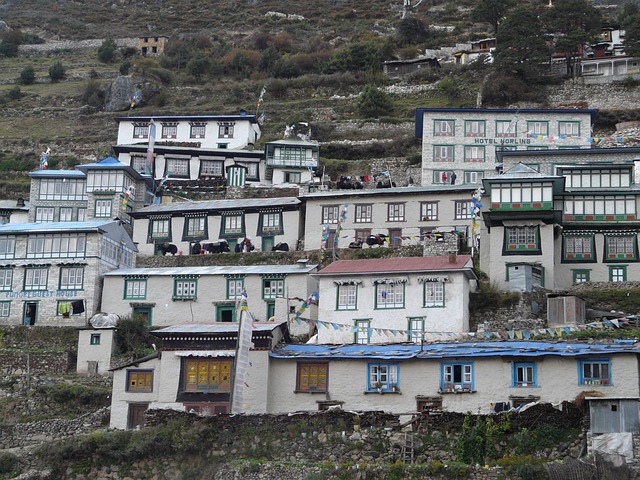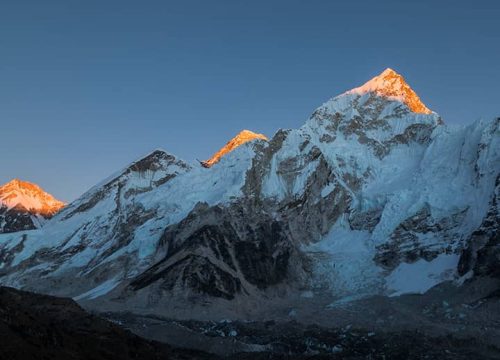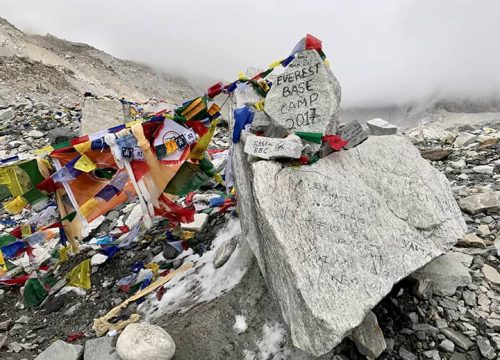The Everest Base Camp Trek is one of the most audacious adventures in Nepal. As the highest peak in the world, Mount Everest has captured the imagination of mountaineers for decades. Hundreds attempt to climb this legendary mountain every year, while thousands dream of it. Not everyone succeeds, but the Everest Base Camp Trek lets travelers experience its grandeur without summiting the peak.
This trek offers a vivid glimpse of Everest and its surrounding peaks, making it the most popular and desired trek in Nepal. Many travelers describe it as a life-changing journey—some return inspired to climb Everest, while others carry unforgettable memories of the Himalayas.
Beginning the Journey: Lukla and Phakding
Your adventure begins with a 25-minute flight to Lukla Airport, one of the most thrilling airports in the world. From the air, panoramic views of Everest and neighboring mountains welcome you.
From Lukla, the trek starts to Phakding, passing over suspension bridges and cozy tea houses where you can rest. Along the way, prayer flags flutter peacefully, and majestic peaks like Gongla (5813 m), Nupla (5885 m), and Karyolung (6511 m) accompany your journey.
The trek also passes through Sagarmatha National Park, home to wildlife such as the snow leopard. Sherpas guide trekkers with unmatched skill and warmth, making it possible for even novice hikers to complete the trek at a moderate pace.
Namche Bazaar: The Trekker’s Oasis

Next, the trail leads to Namche Bazaar, the main shopping hub of the Everest region. Here, you can stock up on trekking gear, food, and medical supplies. The trek includes four suspenseful suspension bridges and the flowing Dudh Koshi River, offering mesmerizing views that keep your spirits high. Before reaching Monjo, catch sight of Thamserku (6608 m), Kusum Kanguru (6367 m), and Kongde (6168 m).
Panoramic Views: Syangboche to Tengboche
Syangboche offers one of the most panoramic viewpoints of the trek. Peaks like Kongde (6168 m), Khumbila (5761 m), Nuptse (7864 m), Lhotse (8516 m), Ama Dablam (6812 m), and Everest (8848 m) dominate the skyline. Many visitors enjoy a cup of Nepali tea here while soaking in the breathtaking scenery.
The trek continues to Tengboche, famous for its monastery and dense rhododendron forests. Spot wildlife such as Himalayan Tahrs, snow leopards, and colorful pheasants while experiencing the ethereal Himalayan atmosphere.
Final Stages: Dingboche, Lobuche, and Everest Base Camp
From Dingboche (4410 m) to Lobuche (4940 m), snow-capped peaks draw closer, and the Khumbu Glacier dominates the landscape. The final push takes you to Gorkhashep (5170 m), where peaks like Pumori (7138 m), Changtse (7543 m), and Nuptse (7861 m) peek through the mist.
The journey culminates at Everest Base Camp (5364 m), with Kala Patthar (5550 m) providing a 3-dimensional view of Everest and surrounding peaks—a perfect spot for photography and reflection.
Tips for the Everest Base Camp Trek
- Stay hydrated and pace yourself.
- Respect local culture and customs.
- Carry proper trekking gear for high-altitude conditions.
- Listen to Local guides for a safe and enjoyable trek.





